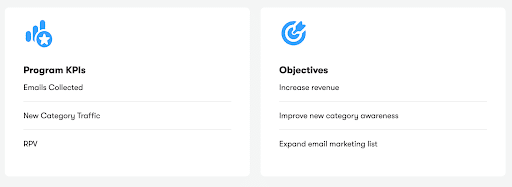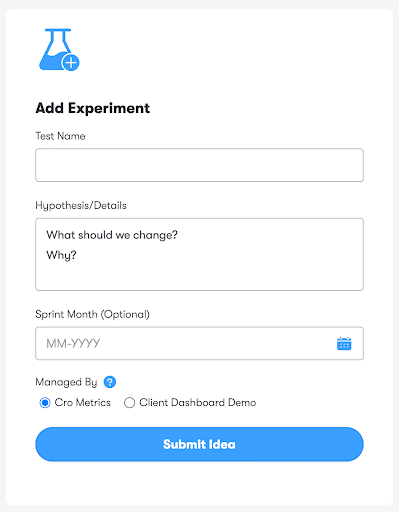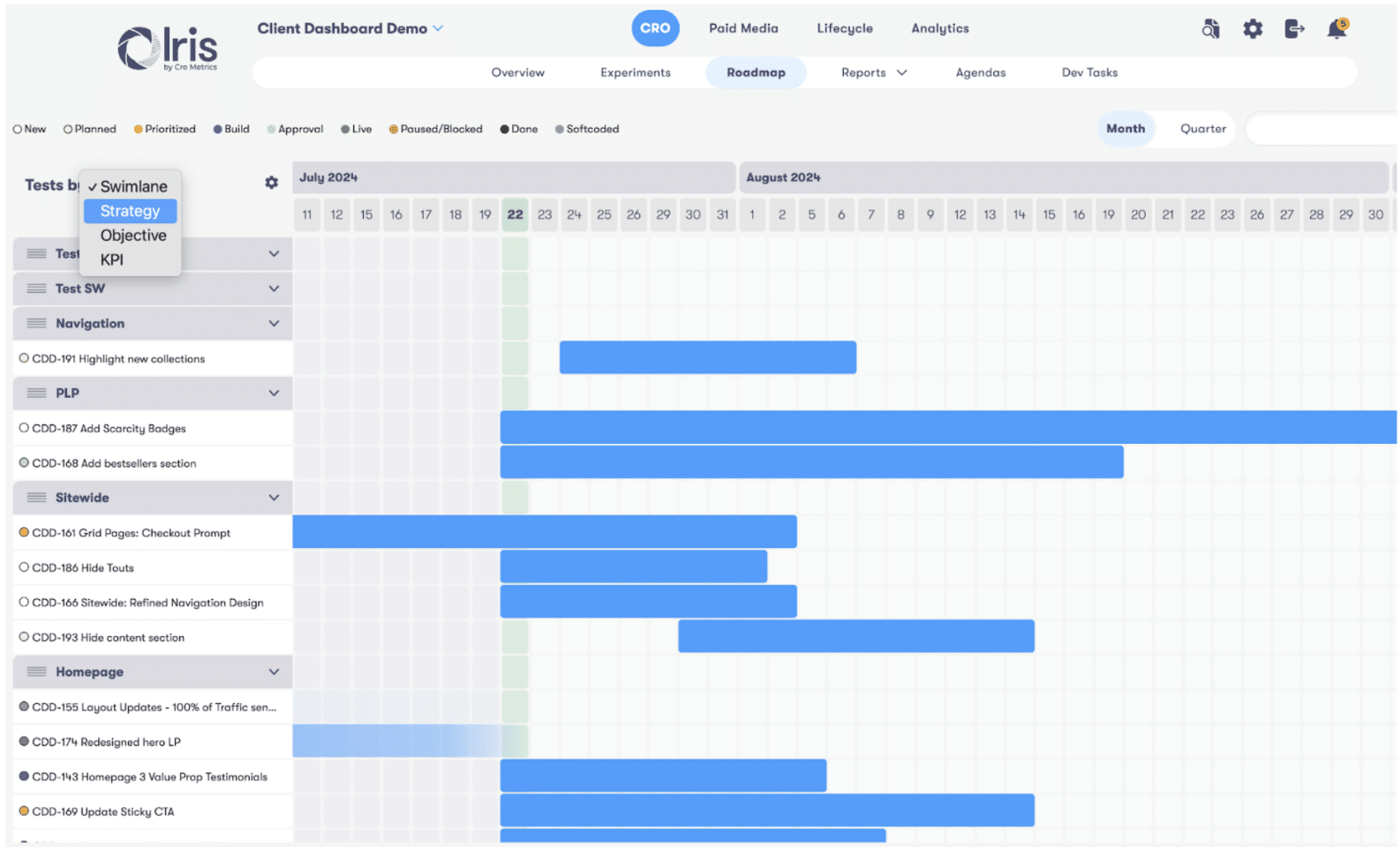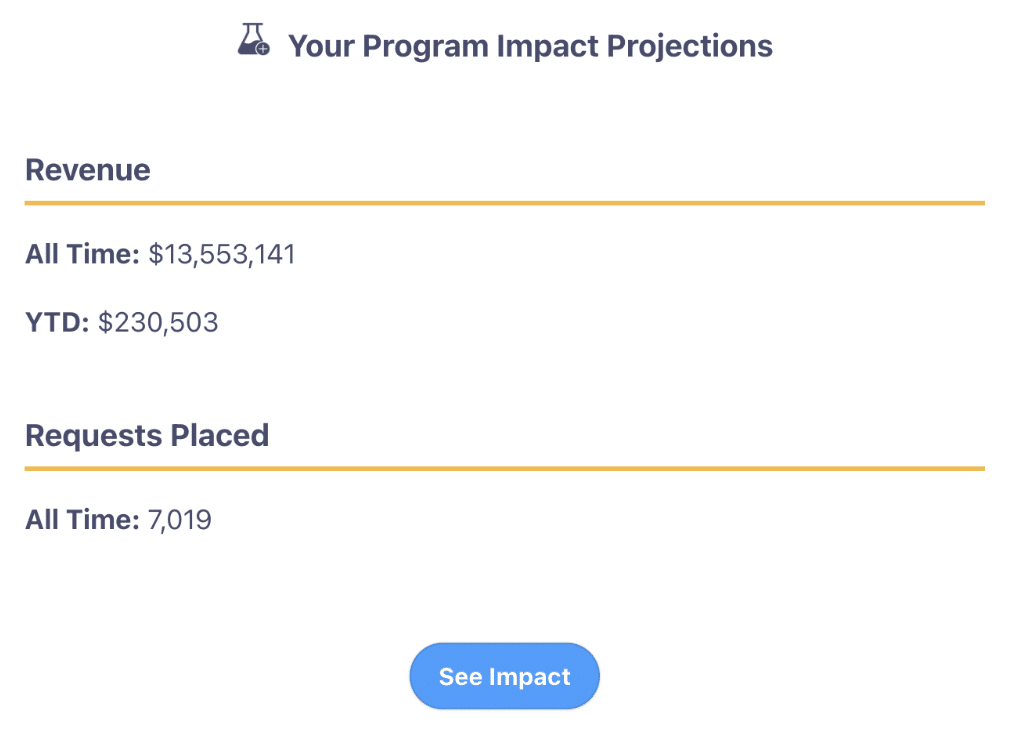After working in Conversion Rate Optimization for nearly seven years and digital marketing for over twenty (yikes, I’m old), one thing has become obvious—enduring success is wholly dependent on building a Center of Excellence around your experimentation practices.
Sure, a startup or small business can find traction with a more tactical, loosey-goosey approach. But something happens to larger, more established businesses—agility becomes inertia, decisiveness becomes indecision, and the need to experiment devolves into risk aversion.
What exactly is a Center of Excellence (CoE)? In this context, a CoE is a dedication to establishing and promoting methods, processes, and tools rooted in experimentation to drive continuous improvement and innovation across org-wide testing.
There are numerous advantages to building and nurturing a CoE. Not only does it overcome inertia, risk aversion, and indecisiveness, but it enables a powerful platform for growth, including:
- Compounded learnings. Each experiment, win, lose, or draw, teaches us something about our customers.
- Compounded impact. A continuous cycle of testing where wins can be iterated upon, compounds impact over time, often leading to amazing results.
- Unexpected innovation. When we learn what our customers want, it’s easier to innovate to grow our market share and tap into new, often unexpected opportunities.
Building a CoE
We’ve discussed the importance of building a Culture of Experimentation before, including how to structure a team around it. A CoE starts with assessing your company’s culture and readiness. The best CoEs will not change a culture that’s not ready to embrace experimentation, but they will foster and improve one that has the building blocks in place. As emphasized in our article on Culture of Experimentation, that starts with leadership. Or, more commonly, it starts with a champion (or champions) of experimentation who can get leadership excited and onboard.
Once the building blocks are in place (culture and team) and leadership places their attention on the importance, great CoEs all share the following tenets:
- Success metrics and alignment. Overarching growth goals and KPIs need to be established. The experimentation roadmap then needs to ladder to those KPIs and be easy to visualize how each experiment/campaign maps back.
- Accountability and governance. The team needs to be clear on who is driving initiatives and how. A governance structure ensures ongoing accountability and strategic alignment. Standards should be established around program hygiene and management. Leadership then needs to hold the team accountable to the standards and cadence.
- Democratization. Great ideas can come from anywhere. Mechanisms to continuously gather ideas and incorporate feedback (feedback loops) into the experimentation process ensure participation and ongoing excitement.
- Transparency. Everyone should have access to learn about the program(s). Centralized repositories for experiment results, analytics, and insights, along with the ability to socialize empower teams to capitalize on learnings and secure continued investment in success.
- Incentivization. A culture of experimentation grows when individuals are rewarded for contributions and recognized (preferably publicly) for their efforts.
- Velocity. Agile methodologies ensure flexibility and quick iteration based on experiment results. The more swings at bat, the more chances to hit a home run. The best CoEs are designed around reducing process friction to enable velocity through quick concept, build, launch, review, and workflows that expedite experiments from concept to launch.
- Training and Development. Ongoing training and resources to equip the team with the latest tools and methodologies in experimentation and optimization are paramount for ongoing success. It also makes it easier to onboard new team members as they come in or transition within the organization.
Tooling
Much of the above becomes effective with the right tooling. This is why we built Iris. When Iris was launched 4+ years ago, it was quite different from what was on the market. As we’ve worked with more enterprise clients, such as Doordash, Calendly, Hyatt, Intuit, and dozens of others, we’ve been able to align the platform’s features with the tenets outlined above and extend it beyond website optimization to web analytics, Paid Performance and Lifecycle Marketing management. In lieu of a platform like Iris, focus on tools that will at a minimum allow for visual roadmapping, easy sharing, and documentation. Above all, the tooling should be centralized, cohesive, and accessible.
Putting it into practice
My advice is to begin with a crawl->walk->run approach. Consider the MVP for the above tenets and rollout the basics for each. While I won’t attempt to provide an exhaustive prescriptive list on how to achieve this (reach out to me if you’re curious on going further), here are a few examples that will get you in the crawl stage. (And even if you’re in the crawl or walk stage already, there are always improvements to be made!)
Put KPIs front and center
Whatever tool you use, make sure to broadcast the objectives and KPIs. Reinforce these in updates. (For example, if you send out a digest of tests, make listing these evergreen.)

Create a mechanism to collect ideas
Make it ridiculously easy for anyone to submit test ideas. For example, in Iris, we put an idea submission form front and center.

Publish a clear and easy-to-understand roadmap
Roadmaps can be daunting—especially in a high-velocity testing program. Unless you’re close to the program itself, it can be hard to understand what is being tested and why. Strive to use tools that provide a visual representation of the roadmap with easy ways to see what’s being tested with clear hypotheses.

Push don’t pull
As someone who’s worked in analytics for the better part of my career, one thing is pretty evident—people don’t look at dashboards. If your job relies on a dashboard, sure, but if not, getting people to actively look at results is really hard. This is why we generate a weekly program digest that’s pushed to all stakeholders with links that lead to areas in Iris, such as test details and impact reporting.
Critical things to include in a digest:
- What we’re learning about our customers through testing
- Recent and collective impact from winning tests
- Active and upcoming tests and why you’re excited about them
Also, be sure to:
- Send to key executives
- Keep it short and sweet
- Use the medium that will give it the best chance of being paid attention to. Email is a default fit, but if your company is all on Slack, that might make more sense.
- If you do use email, make sure it can easily be read on mobile devices

Building a Center of Excellence is not just about implementing new processes—it’s about fostering a culture of continuous improvement and innovation. By establishing the right structures, tools, and mindsets, you’ll overcome inertia, drive impactful results, and unlock unexpected opportunities.
If you’re ready to take the next step in building your CoE or have questions about any aspect of the process, reach out to me to explore how we can collaborate to elevate your experimentation practices and drive growth for your business.

